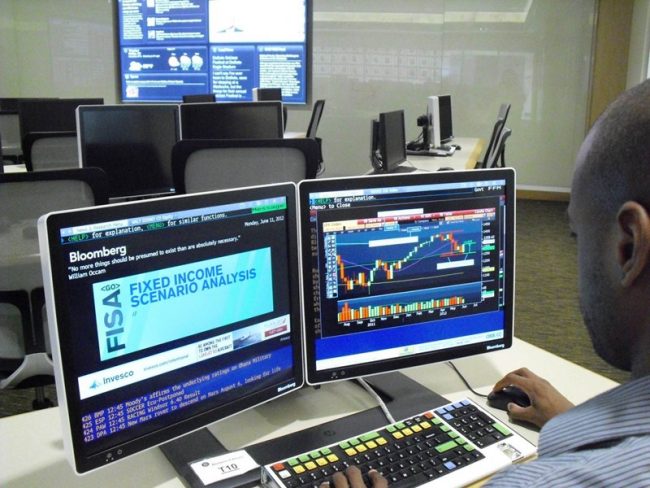Dr. Ira Greenberg sits in his office in the Center of Creative Computation located next to Hamon Arts Library. The director and professor for creative computation works on his desktop computer. His eyes dart back and forth on the monitor as he rapidly types across his keyboard. His styled hair and professional demeanor makes him seems intimidating, but his welcoming smile warms the room up. Greenberg’s paintings and photos of 3D sculptures hang around his white-walled office and dashboard homepage.
“My background was in painting,” Greenberg said. “Questions I asked myself as a painter about patterns to create my own work, I started to think about it in code.”
Greenberg’s curiosity led him to delve deeper by investigating further into coding and computation. His findings astonished him.
“I realized that creative computing is an amazingly powerful medium that we were mainly using for functional, utilitarian purposes,” Greenberg said. “I saw it as this powerful palette for artists. It’s traditional where I create stuff that can be painted or sculpted, but a lot of the work I’m doing is building new approaches to languages or softwares other artists or people can use.”
Greenberg channeled this newfound passion and sought to build a program around the idea. He then came to SMU six years ago with the promise that he and other faculty members in similar fields could build a center for creative computation.
“Our program is continuously built each year,” Greenberg said. “We have somewhere upwards of 40 majors and a lot of minors. There seems to be steady growth.”
The creative computing program allows students to take varying types of courses and customize their schedules. Requirements include six essential courses in creative practice, applied technology and six-to-seven courses in creative computing, the hybrid practice with technology.
Sophomore Sadie Donnelly intended on pursuing an arts major before she discovered creative computing.
“Originally throughout high school I had been interested in art electives and had intended on pursuing that as my major,” Donnelly said. “However, when investigating the Meadows website, I stumbled across information on creative computing. I realized it was perfect for me, it’s still creative and has an edge over traditional media in a society that’s evolving so quickly.”
Classes heavily focus on coding. Most class set-ups involve students bringing their own laptops and learning code alongside the professor. Programs like Processing and Xcode are commonly taught, but countless other programs and coding languages keep students interested.
In fact, creative computing majors have such a desire to learn that many have pursued undergraduate research with the help of Dr. Greenberg, Dr. Bakos and Engaged Learning advisers.
Greenberg said that one student, Kali Ruppert, has started a project combining art history with code, looking at patterns in terms of connecting with art historical research.
Another student, Brittany Watkins, worked with Greenberg over summer on a project they call Protobyte.
“Protobyte is a library for other developers to write code using our library to generate 3D, organic forms and build 3D worlds in a sense,” Greenberg said.
The fervor students and professors have in creative computing for research looks promising to find new discoveries in the future, especially with the help of Engaged Learning.
Susan Kress, director of Engaged Learning, says their initiative ensures all undergraduates have unique, self-driven opportunities for undergraduate research, community service, professional internships, creative production and entrepreneurial ventures; that is, beyond the classroom learning, as part of their SMU education.
“[The purpose of this program] is a way to make their dreams come real, provide funding to make them happen, build their resumes, and receive recognition by the university for what they have done,” Kress said.
The hybrid field is still new, but the creative computing program along with Engaged Learning research has proved beneficial for students as they search for jobs after college or apply for graduate schools.
“We didn’t necessarily know this would happen, but our students are having unbelievable opportunities with this program,” Greenberg said. “We’ve had students get into top graduate programs on their first try or get into all four they applied to; even their first job choice they’ll get.”
Greenberg hopes creative computing will carve a pathway for students interested in both science and arts.
“We have a poor numeracy in our culture where people don’t understand math and numbers very well, and we sort of bifurcated that by saying you’re either a math type or a creative type, but we often don’t integrate those things,” Greenberg said.”I think creative computing is a way to combine those things to help people be creative and analytical at the same time and not see them as such different paths. And that there’s options for people to not have to choose. It’s contribution.”









